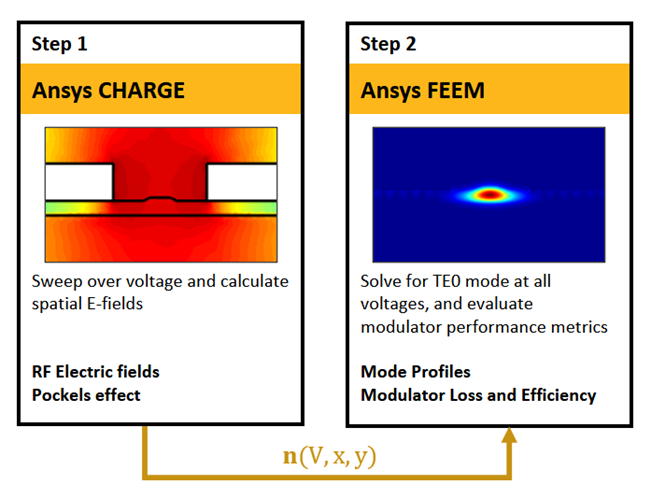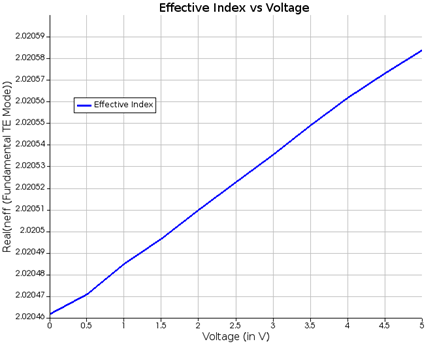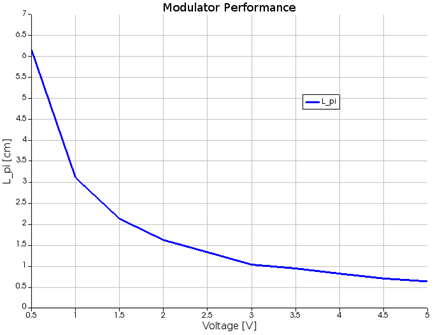Introduction to Advanced LiNbO3 Electro-Optic Modulators
In the field of optical communications, lithium niobate (LiNbO3) modulators are critical for their superior performance. Recent breakthroughs in thin-film lithium niobate have achieved operational bandwidths in the terahertz range, pushing data transmission speeds to impressive new levels. Combining LiNbO3 with silicon photonics has enhanced these modulators, leveraging the strong electro-optic effects of lithium niobate alongside the mature technology of silicon manufacturing. These advances mark a significant phase in the evolution of photonic integrated circuits, opening new opportunities for technology development and application.
The Importance of Simulation in Improving LiNbO3 Modulators
LiNbO3 electro-optic modulators are becoming much more advanced, largely due to new simulation software that makes it easier to create and improve these devices. These programs help achieve very high-speed performance and ensure that these modulators work well with silicon photonics technology. This software speeds up the design process, helping turn creative ideas into reliable, high-quality modulators for optical communication.
Now that we've discussed the technical underpinnings that enable precise modulator design, let's examine how these principles are applied in real-world scenarios. The upcoming case studies will illuminate the practical impacts of these technologies and how current research is paving the way for the future of optical communications.
Case Study: High-Bandwidth LiNbO3 Modulators
In a landmark study by Mercante et al.[1], researchers have made a significant leap in photonics by creating a lithium niobate (LiNbO3) electro-optic modulator that operates at terahertz frequencies. This breakthrough was achieved by engineering shallow rib waveguides and gold coplanar waveguides to guide the optical and radio frequency signals effectively, allowing for a modulating response up to 500 GHz. The modulator exhibited a low half-wave voltage, signifying efficient modulation—an essential factor for reducing power consumption in photonic systems. This innovation is a testament to the untapped potential of LiNbO3 modulators in high-speed communication and advanced sensing applications.
The study's reliance on simulation tools like Lumerical FDTD Mode Solver was crucial, highlighting how accurate modeling of the optical group index can inform the design and optimization of modulators. For professionals in optics and photonics, this case study illustrates the importance of simulation in pushing the boundaries of electro-optic modulator technology. As the industry moves towards higher frequencies and more integrated photonic circuits, the role of advanced simulation in achieving these technological advancements becomes increasingly vital.
Case Study: High-Power Hybrid Silicon-Lithium Niobate Modulator
The field of high-speed optical communications has taken a significant step forward with the development of a hybrid silicon-lithium niobate Mach-Zehnder modulator, as reported by Valdez et al[2]. This modulator stands out for its ability to handle optical powers up to 110 mW and its impressive 3-dB bandwidth exceeding 110 GHz, achieved without the need for etching the thin-film lithium niobate. The innovation lies in the use of hybrid optical modes, where the waveguide core comprises both silicon and lithium niobate, allowing for high-power capacity while retaining high modulation efficiency. This breakthrough paves the way for advancements in analog optical communications and RF photonic links, where handling higher optical powers at high speeds is crucial.
The modulator's efficiency is evidenced by its low on-chip optical insertion loss of just 1.8 dB and a VπL product of 3.1 V·cm, indicative of the device's ability to modulate light effectively at lower voltages. The fabrication process utilized silicon photonics techniques, including direct hydrophilic bonding of the lithium niobate to planarized silicon, enabling seamless integration with existing silicon-based photonic circuits. Such technological strides underscore the importance of material hybridization in pushing the performance envelope of electro-optic devices, offering a glimpse into the future of ultra-fast, high-power optical modulators.
Having explored the fundamental importance and applications of lithium niobate modulators, let's now delve into the intricate design process. The following section provides a deep dive into the powerful simulation capabilities of Lumerical software, detailing how it can be leveraged to fine-tune modulator designs for peak performance.
Exploring Lumerical's Depth: A Technical Dive into Electro-Optic Modulator Design
Lumerical's CHARGE and Finite Element Eigenmode (FEEM) solvers represent the cutting edge in simulating the nuanced electro-optic behaviors of lithium niobate modulators. The CHARGE solver plays a pivotal role in modeling the electrostatic field distribution within the modulator, an essential step in understanding how applied voltages will alter the refractive index of the lithium niobate due to the Pockels effect. By accurately predicting the electrical response, designers can optimize electrode placement and the modulation efficiency of the device. Moving forward, the FEEM solver takes the helm, calculating the eigenmodes of the optical waveguide. This step is critical for ensuring that the phase matching condition — a key to efficient modulation — is met. By simulating how the light propagates through the waveguide's altered refractive landscape, the FEEM solver helps in fine-tuning the waveguide geometry for maximum mode overlap and minimal optical losses. Together, these tools allow for precision engineering of modulators that can operate at the desired voltages and frequencies, a task that is paramount for developing high-speed optical communication systems.
Figure 1, which illustrates the workflow used to evaluate the electro-optic properties of the modulator.

Figure 1, which illustrates the workflow used to evaluate the electro-optic properties of the modulator.
For better understanding, I show some figures that I described in the video. As we can see from Figure 2, the relationship between the applied voltage and the change in the real effective index is crucial for understanding the modulator's performance under different operating conditions. This graph is a direct output from the simulation, providing us with insight into the modulator's behavior.


Figure 2: Change in the (a) real effective index (b) Modulation performance metrics as a function of applied voltage
For a detailed walkthrough of the simulation process, please watch our video tutorial, where we demonstrate the capabilities of Lumerical's CHARGE and FEEM solvers.
Conclusion
We’ve journeyed through the innovative world of lithium niobate electro-optic modulators, seen their immense potential in high-speed communications, and uncovered the powerful role of Lumerical simulation software in pushing the boundaries of photonic technology. As the industry strides toward a future of more integrated and sophisticated optical systems, the insights gained from simulation and modeling become increasingly valuable.
Engage with Us:
- Share Your Thoughts: Have these insights sparked new ideas for your projects? Share your thoughts and questions in the comments below – let's cultivate a discussion that drives innovation forward.
- Connect for Collaboration: Are you looking to harness the capabilities of lithium niobate modulators in your work? Reach out to us for a consultation, and let’s explore how we can turn these technological possibilities into your competitive advantage.
- Stay Updated: Interested in staying at the forefront of photonics technology? Subscribe to our newsletter and YouTube channel for the latest articles, tutorials, and industry news.
- Follow Our Tutorial: Ready to dive deeper? Keep an eye out for our upcoming video tutorial where we will walk you through Lumerical's simulation process, showcasing the practical steps to optimize your modulator design.
References:
[1] Andrew J. Mercante, Shouyuan Shi, Peng Yao, Linli Xie, Robert M. Weikle, and Dennis W. Prather, "Thin film lithium niobate electro-optic modulator with terahertz operating bandwidth," Opt. Express 26, 14810-14816 (2018)
[2] Aldez, F., Mere, V., Wang, X. et al. “110 GHz, 110 mW hybrid silicon-lithium niobate Mach-Zehnder modulator”. Sci Rep 12, 18611 (2022).
Nov 10, 2023 11:28:02 AM
